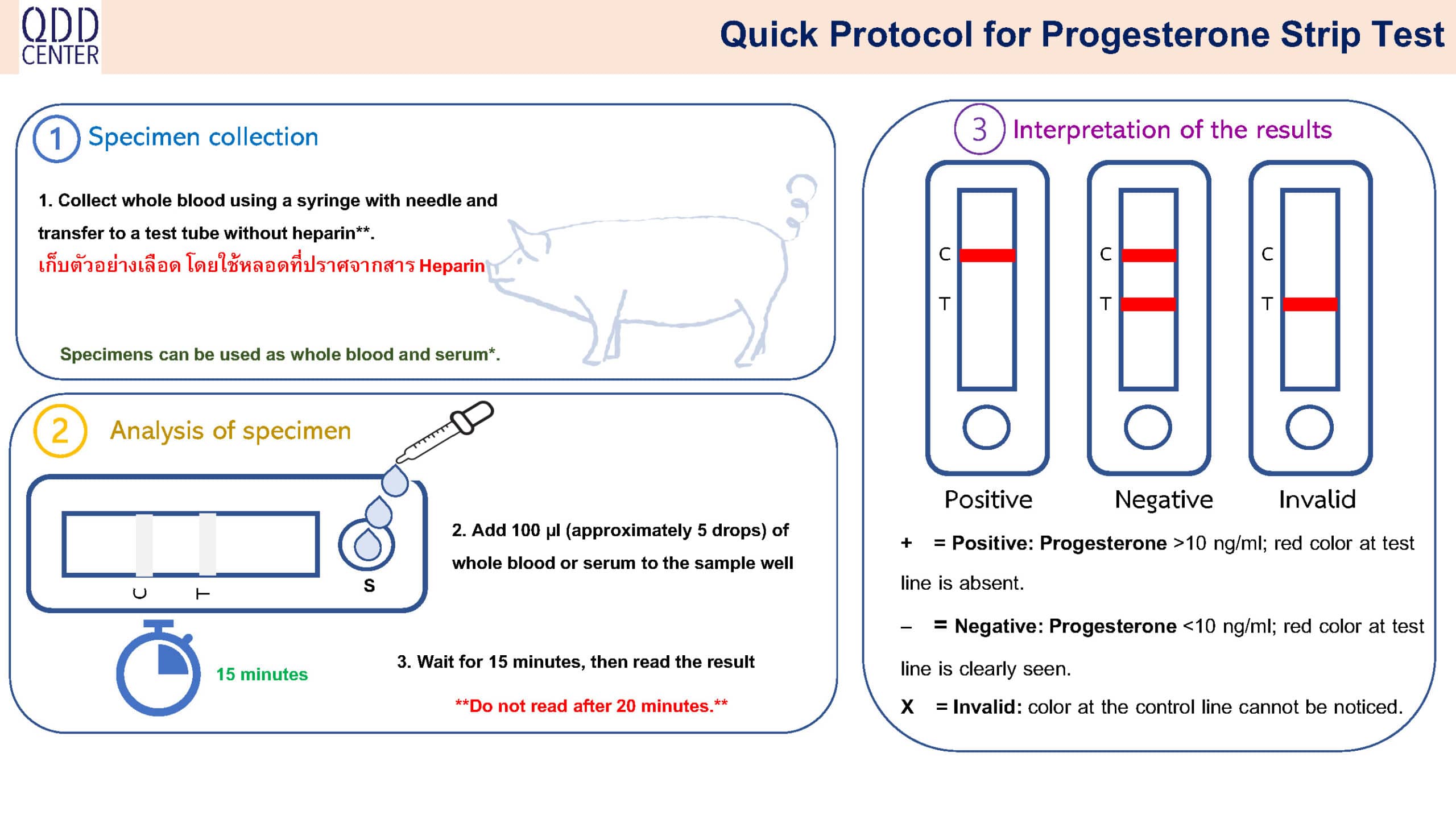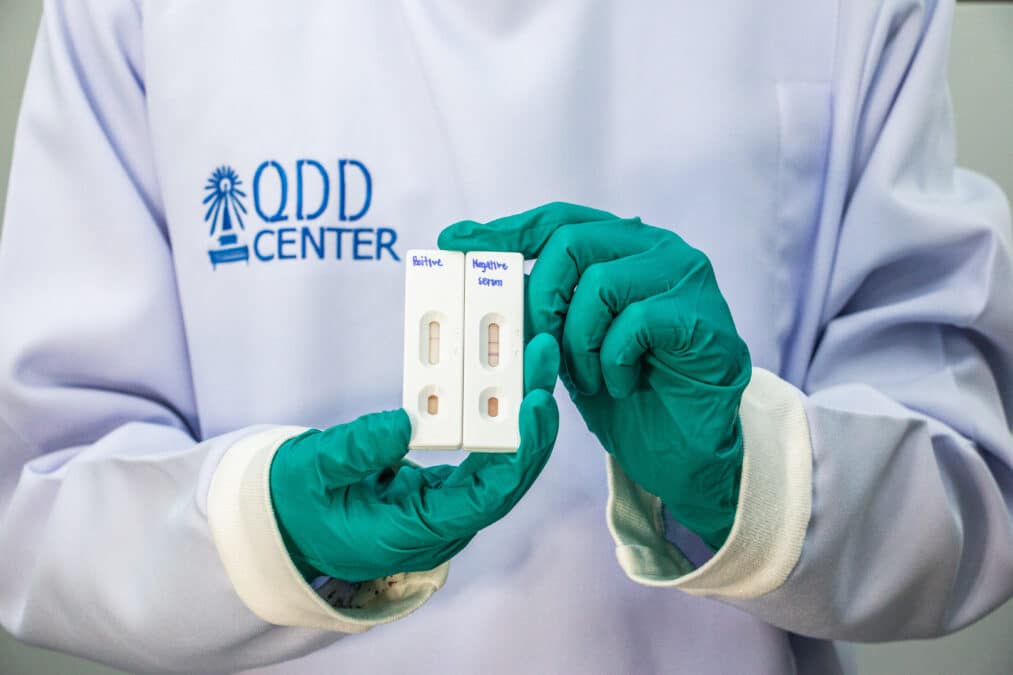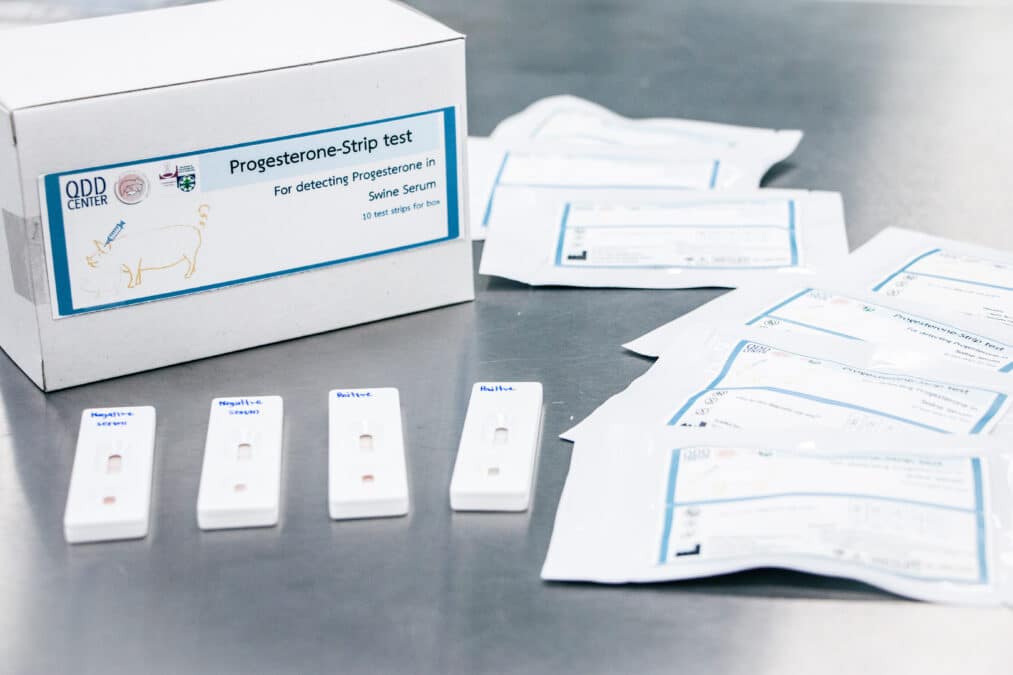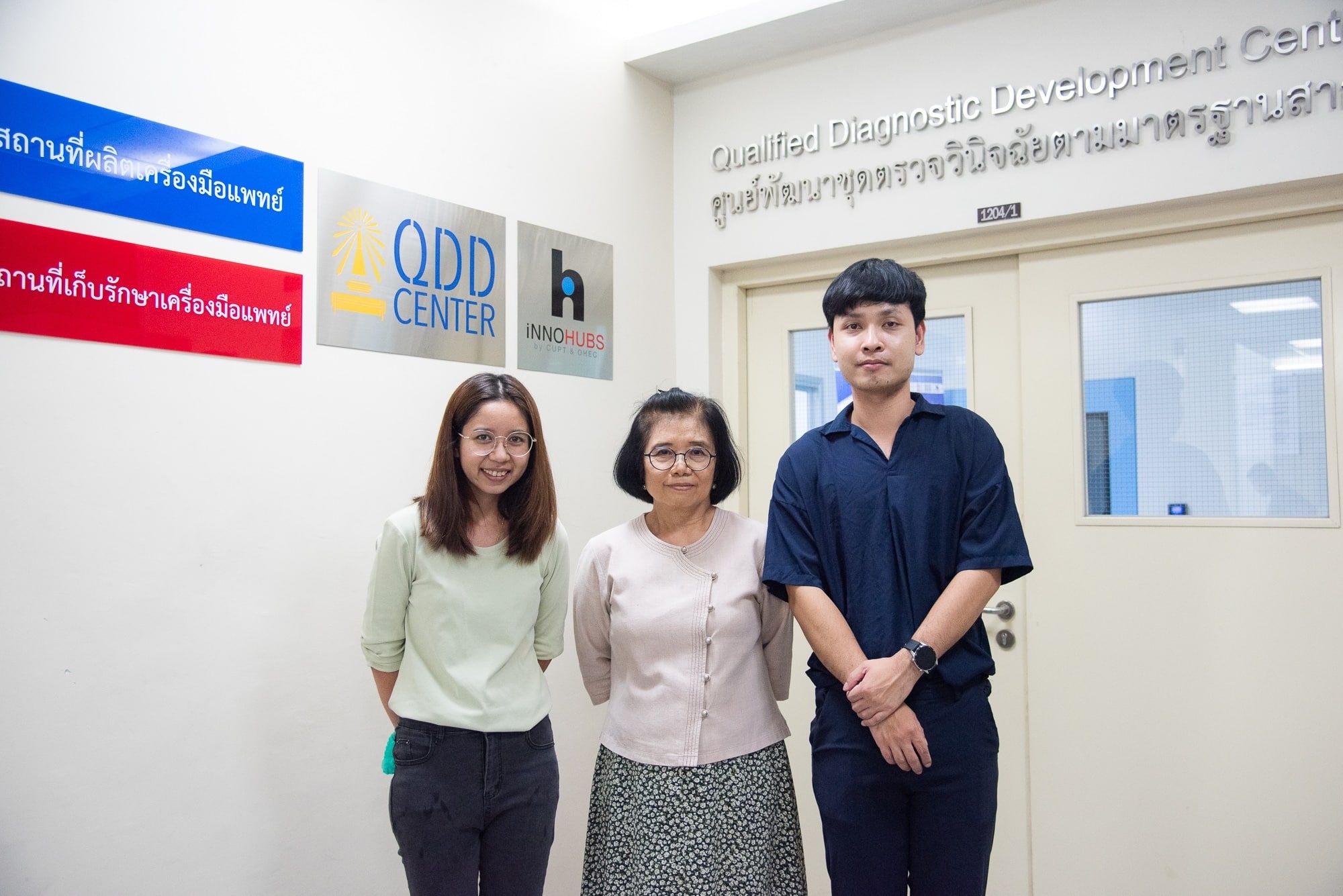News — A simple way to find out whether a gilt is already pregnant is through the Progesterone Test Kit – an innovation developed by Chulalongkorn University researchers that is easy for farmers to use, with fast and accurate results. The kit can help increase the efficiency of farm management and has also been tested for use in over ten countries.
Is the gilt pregnant yet? Is she ready to breed? These are the questions that pig farmers need the answers to better manage their farms for the highest yield of piglets. In the past, these questions would be answered accurately only by experienced pig breeders but for those who are new to the field and don’t yet have the expertise, examining each sow to find whether they are pregnant is very time-consuming.
“Observing whether a pig is pregnant is quite difficult. The main problem is that some of the gilts do not show any signs of pregnancy which means that sometimes the diagnosis of pregnancy can be a mistake. This is where science comes in to help. The research team of Assoc. Prof. Dr. Kittinan Komolpis along with the research team of Prof. Dr. Padet Tummaruk have shown the initial results that the test kit prepared in the laboratory can help solve this problem.” Prof. Dr. Sirirat Rengpipat, Director of the Qualified Diagnostic Development Center, Chulalongkorn University has applied this concept to develop the Progesterone Test Kit for swine.
According to Prof. Dr. Sirirat, “Pork is a popular type of meat and pigs are one of the most vital livestock that generate significant income for the farmers. The efficient management of farms thus plays a crucial role in contributing to the economy and food production of the country. The testing of the gilt’s readiness for breeding or its pregnancy is therefore an important step in the pig farming management that affects the planning of swine trading in the future.”
Traditional ways of testing pregnancy for gilts
It used to be that experienced farmers would observe the physical features, behavior, or symptoms of their gilt to determine whether it was ready for pregnancy.
“The farmer would see whether the gilt showed signs of being in heat by observing the reaction of the boar to the gilt to determine the early stages of a sow. This mostly depended on the individual’s expertise.” Prof. Dr. Sirirat explained using some illustrations.
Nowadays, aside from the traditional ways, there is a scientific way that can produce more accurate results known as the ELISA Test (Enzyme-Linked Immunosorbent Assay).
“This method will test the progesterone level in the gilt’s blood. Progesterone is the hormone level in females and its function relates to the growth and reproduction of mammals. If this hormone level is high then the chances of pregnancy are increased.” Prof. Dr. Sirirat added.
Nevertheless, the ELISA Test involves a complicated process. It requires that the results be analyzed in a laboratory and an expert to read the results of the test. Most of all, the cost is considerably high. At around 500 baht per test, the ELISA Test isn’t very popularly used in the breeding of pigs as livestock in Thailand.
Chula’s Progesterone Test Kit: The Answer to the Needs of Pig Breeders
The Progesterone Test Kit is an innovation that helps solve the problems farmers might have in terms of pig breeding.
Prof. Dr. Sirirat concluded by highlighting all the remarkable features that make the kit a success by saying “Farmers can administer the pregnancy test of their gilts by themselves. The kits are simple, easy to carry around, show fast results and the price is quite inexpensive.”
“The kit can be used to test the progesterone level in the gilts by taking a small blood sample of around three drops that can be from the gilt’s ear or one can also take the clear serum that settles on top when the blood is left out and drop it on the Strip Test then leave for about 15 minutes. The process is similar to the COVID-19 ATK test.”
Reading the result is not hard at all. If the result is positive the kit would show 1 line which means the progesterone level is higher than 10 nanograms per milliliter and the hormone level is high enough for a pregnancy to occur. The test should be done any time 18-24 days after mating has taken place.
On the other hand, if the test shows 2 lines this means the progesterone level is lower than 10 nanograms per milliliter and the gilt is, therefore, not pregnant.

Quick Protocol for Progesterone Strip Test

“The test will help differentiate the gilts that are entering reproductive age to be ready for mating. With that knowledge, one can plan and manage costs for proper management of the farm.”
Prof. Dr. Sirirat disclosed that the use of the actual test on gilts that had been through the mating process in farms both in Thailand and Spain showed an accuracy of more than 96% which is in the same range as that of the ELISA test.
Several leading companies in the pig breeding business have introduced the kit for use in around 10 countries around the world – the United States, France, Belgium, Spain, Ukraine, the Philippines, Indonesia, Vietnam, South Korea, and China.
“And in the future, our research team hopes to extend the use of similar test kits to small ruminants like sheep, goats, or even cats and dogs.”

Chula’s Qualified Diagnostic Development (QDD) Center
The Progesterone Test Kit for pigs is the first research project produced by Chulalongkorn University’s Qualified Development Diagnostic Center (QDD) which applied the work of a team of Chula researchers and saw to it that the production met with international standards to receive certification of international standardization.
For this first test kit, Prof. Dr. Sirirat and the research team led by Dr. Wanwisa Poonlapdecha Head of the QDD’s Biological Laboratory, and Mr. Natthiwut Khun-awut Head of the Quality Control have applied the research of the team led by Assoc. Prof. Dr. Kittinan Komolpis from the Institute of Biotechnology and Genetic Engineering to serve as the prototype for the project along with the research team of Prof. Dr. Padet Tummaruk from the Faculty of Veterinary Science, Chulalongkorn University.

QDD center strives to develop and improve medical test kits through ISO13485 international standards to ensure the highest levels of efficiency in modern diagnosis.
“The main function of this center is to develop strip tests and swift testing that yield quick results that can be produced to serve commercial purposes.”
Prof. Dr. Sirirat also emphasized that “Agencies both from within Chula and outside can avail of the services of our center to assure that their research is put to use. They can be produced here to assure the standards and consistencies are maintained.”

